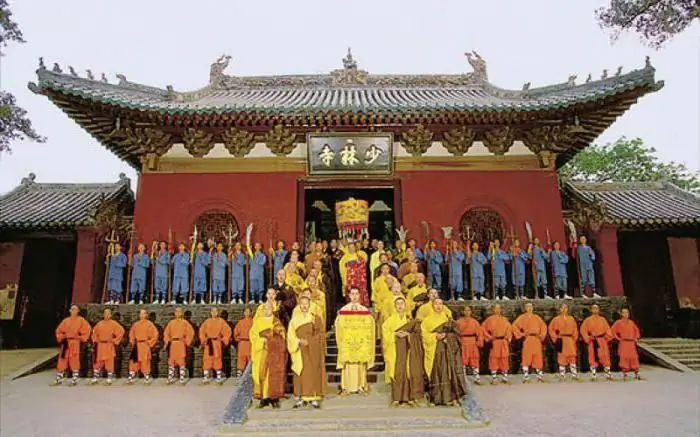- Author Harold Hamphrey [email protected].
- Public 2023-12-17 10:06.
- Last modified 2025-01-24 11:10.
In the northeast of China is its capital - the city of Beijing. The first settlements on its territory arose several millennia ago. The name of the city in translation sounds like "Northern Capital". Today, the capital of China is not just a large metropolis, but primarily a major cultural and tourist center of the country. In its numerous monuments of history and architecture, the entire centuries-old past is displayed.

The architectural appearance of the city has a unique look. Already in the 17th century, it surprised with its grandiose architectural ensembles. All the main roads ended with majestic gates, and the walls of the houses were faced with brick. Many architectural masterpieces of that time have been preserved to this day, for example, the "Gate of Heavenly Peace" and lamaist pagodas. In total, there are more than 7,000 cultural and historical monuments in Beijing.
Famous landmarks
The capital of China is famous all over the world for its Imperial Palace. The huge Gugong palace complex consists of 9999 various rooms. The residence of Chinese emperors used to be called the "Forbidden City", because of its inaccessibility to mere mortals. Today it houses a museum wherepriceless antiques and rare antiques are kept.

The main attractions of Beijing are numerous temples. One of the most famous is the Temple of Heaven, built in the 15th century. It contains a Wall of Reflected Sound, known for reproducing words that are whispered. An interesting phenomenon!
Tourists are interested in the Summer Imperial Palace - a beautiful park ensemble with numerous magnificent buildings and temples, which are located along the shores of a picturesque lake.
Square of Heavenly Peace is the largest in the world in terms of size. It can easily accommodate a million people. The square is decorated with the Grand People's Palace and the Museum of the Revolution. Above it rise the Monument to the People's Heroes and the Mausoleum of Mao Zedong.
Beijing Today
After 1949, when the city was given the status of the capital, it began to develop rapidly. In our time, the capital of China has become the heart of one of the largest metropolitan regions in the world. The rapid industrialization of the city made it a major center for mechanical engineering and the production of petrochemicals. The enterprises of the metropolis produce both cars and agricultural machines, as well as computers and televisions.

The capital of China is also famous as the main center of artistic Chinese folk crafts. Local jade and ivory crafts, as well as paper art, are in demand all over the world.
China, Beijing have a large number of highereducational institutions. The capital is home to the oldest and largest universities in the country. The Chinese Academy of Sciences and numerous research institutions are also located in Beijing. Hundreds of thousands of wonderful specialists graduate from the city's universities, who then successfully work in various areas of the country's economy.






